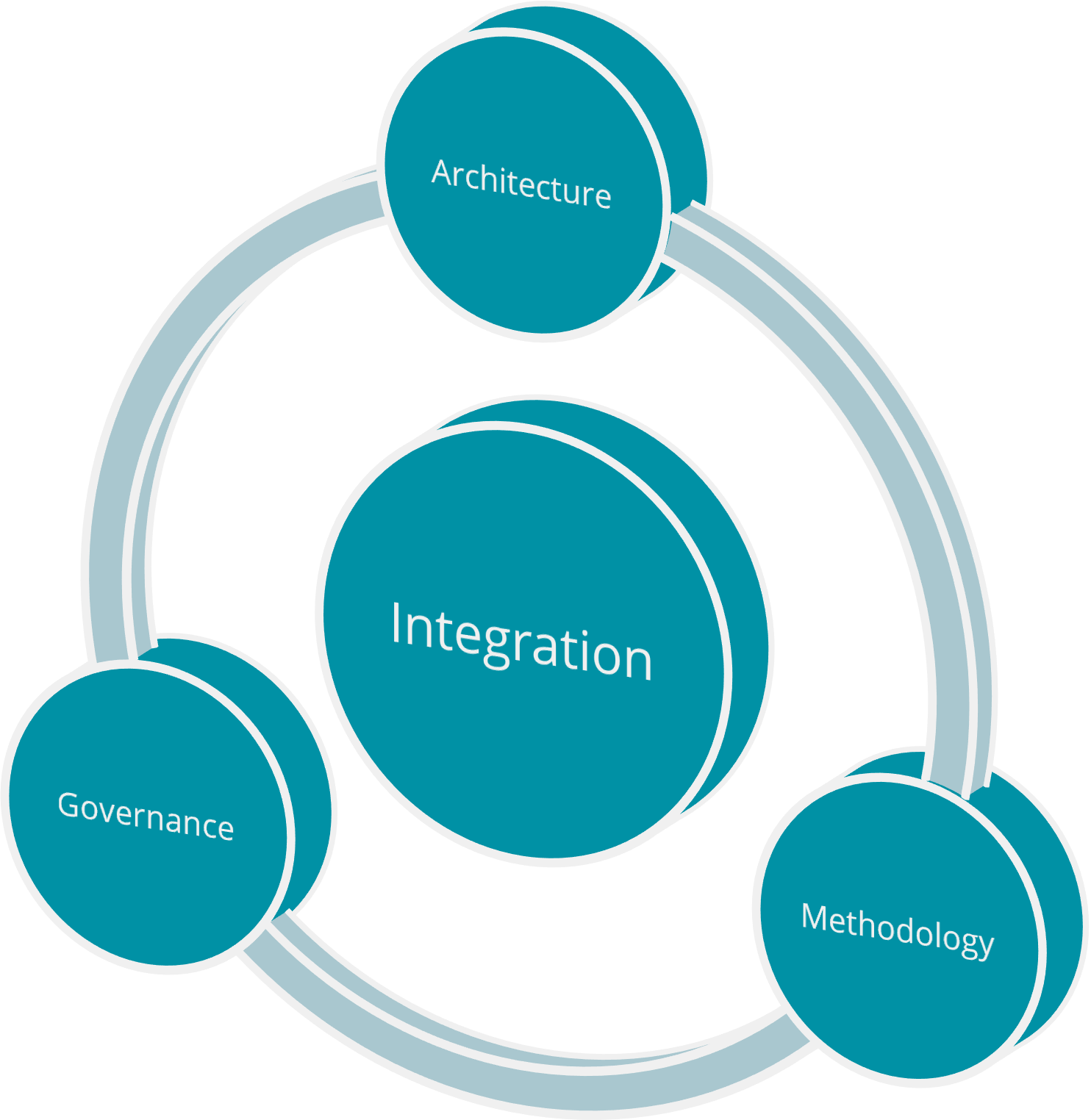July, 2024
Much similar to the electrical wiring or plumbing in a house, system integration ensures seamless connectivity and flow within an organization’s infrastructure. At Link, we understand that this is vital to avoid bottlenecks and optimize operations. Let’s explore why and how.
There’s no Digital Transformation without System Integration
Often, systems communicate directly with each other in a point-to-point manner. This results in complex, unmanaged traffic, difficulty in monitoring, and repeated efforts. Imagine a house where each appliance is connected individually without a unified control – the same chaos can happen with system integration. A centralized integration layer functions as the glue that holds everything together in an organization’s digital transformation journey, guaranteeing controlled, measured, and best-practice-driven connectivity among different applications, databases, and systems.
Now, why is this so important? Well, for starters, it makes life a whole lot easier for everyone. When data can flow freely, people can rapidly access the information they need to make better decisions. It’s like having a superhighway of information instead of a bunch of winding, disconnected roads.
System integration also helps organizations be nimbler and more adaptable. In today’s fast-paced digital world, things change quickly, and they must keep up. With an integration platform, it’s much easier to connect new applications and services, and to adjust to evolving business needs. It’s like having a flexible building block set that you can rearrange and expand as needed.
Another big benefit of integration is that it helps streamline operations and reduce manual work. By automating data flows and business processes, organizations can save time and reduce errors. It’s like having a team of tireless robots working behind the scenes to keep everything running smoothly.
Offering an Omnichannel Experience is only possible with a strong platform practice, so that the customer journey is in fact unified and continuous, no matter where it starts or ends its journey.
The Link Approach
Our approach to system integration focuses on establishing a robust framework and a holistic view that supports various operational needs: 
Architecture with two main pillars: Service Bus for Centralized integration, handling complex orchestrations and mediations, and leveraging native technology adapters. And API Gateway for lightweight control over service access, managing user and traffic policies effectively. Governance, where it’s all about guaranteeing reusability and managing dependencies. And a proven Methodology that includes Assessment, Patronization, Development, DevOps, Testing, and Operations Monitoring.
With over 20 years of practice in this area, our ICE team (a specialized unit in Integration, Cloud, and Experience) boasts more than 70 certifications and numerous successful projects across industries such as banking, public administration, telecoms, energy, and retail. Together, we have been delivering complete integration initiatives all over the world, from Europe (Portugal, Spain, Netherlands, Germany, Croatia) to the Middle East (Saudi Arabia, UAE, Kuwait, Lebanon), Africa (Angola, Mozambique, Ghana, South Africa) and South America (Brazil).
MuleSoft: The Integration Powerhouse
If we want to offer the best of the best services, we must partner with the best of the best tech manufacturers. MuleSoft is a perfect example. It is a leader in the iPaaS (Integration Platform as a Service) domain as recognized by Gartner for the 9th year, and offers several advantages:
- Comprehensive Integration: Covers both service bus and API gateway needs.
- Advanced Connectors: Seamless connectivity with third-party systems.
- Cloud-Based: Ensures scalability and flexibility.
We leverage MuleSoft’s strengths, combining them with our deep expertise in system integration to deliver concrete top-tier solutions. Our clients receive high-quality implementations, avoiding the pitfalls of inexperienced teams that can lead to project failures.
Our integration strategy encompasses four critical aspects:
- Development and Maintenance for Enterprise Integrations: Transitioning legacy systems to modern, scalable architectures.
- Middleware Migration to MuleSoft: Utilizing automation tools to streamline complex migrations.
- Setting Up API Enterprise Initiatives: Enhancing security and connectivity across engagement channels.
- Exposing Data & Services, and API Monetization: Implementing monetization models like subscriptions, pay-per-use, and data licensing.
Debunking the Myths
Don’t let misconceptions hold you back from leveraging the full potential of Mulesoft and advancing your system integration strategies. Here’s why you shouldn’t hesitate to start a project with Link and Mulesoft:
But… There are no Mulesoft Resources in the Market!
Reality: Link has a robust team of integration specialists, fully certified in various technologies, including Mulesoft Certified Developers and Architects. We place a strong emphasis on continuous empowerment and training, ensuring our consultants are up to date with the latest advancements. However, we believe that hands-on experience is equally crucial. Our project teams come with extensive practical experience, ensuring top-notch performance.
Well that’s easy to say, but… You’ll then place junior resources, as all others do!
Reality: Let’s clear this up – Link will never do a “Bait and Switch.” Ethics are embedded in Link’s DNA. We won’t show you a super team and then start the system integration project with someone else. The team structure will be designed with you, focusing on key results like timeframe, budget, and specific business/IT needs. You have the final say in how the team is structured.
Great, but… This way, this will be very expensive!
Reality: It only feels expensive when you’re not getting value for your money. Many organizations waste internal hours mentoring and training outside consultants who should be adding value. Link offers various engagement models to give you full control over costs—from turn-key projects to output-driven models tied to performance KPIs. This ensures you get maximum value without unnecessary expenses.
So, I can control my costs, but… This way, I will never have an internal integration capacity!
Reality: Most of our clients maintain their own internal system integration teams, and we work collaboratively with them. From the moment we start a project, our team becomes part of your team. We include extensive training in all our integration projects to ensure your team can independently handle operations. With Link, there’s no SI lock-in; we want you to work with us because you want to, not because you have to. Our MAP (Mulesoft Academy Program) offers advanced training, creating integration specialists within your organization.
That will solve the internal capacity issue, but… it will take too much time!
Reality: You don’t have to rely on a single solution. While we build your internal capacity, our teams can ensure swift adoption of integration strategies. We have specialized Integration/Mulesoft teams ready to deploy in as little as two weeks, accelerating your transformation drive instead of halting it.
Hum, that’s interesting, but… I don’t know how to run or operate Mulesoft’s Platform!
Reality: Operating an integration platform can be complex, but the benefits far outweigh the challenges. Link has extensive experience in System Integration Managed Services, with 24×7 contracts and strict SLAs. We handle every operational aspect, ensuring quality service with a dedicated team of specialized platform resources. Our proactive and preventive measures, along with automatic behavior detection, reduce incidents and improve platform uptime performance. No more worries or sleepless nights—we’ve got you covered!
No more ifs and buts. Contact us today and take your Digital Transformation to the next level. Our partnership with leaders such as MuleSoft, combined with our specialized expertise, positions us as the go-to company in the system integration space.



